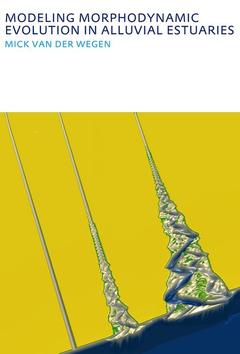Description
Modeling morphodynamic evolution in alluvial estuaries
UNESCO-IHE PhD Thesis
IHE Delft PhD Thesis Series
Author: Wegen Mick van der
Language: English
Subject for Modeling morphodynamic evolution in alluvial estuaries:
Keywords
Van Der Wegen; western; BSS; scheldt; Western Scheldt; tidal; Tidal Prism; prism; Western Scheldt Estuary; sediment; Morphodynamic Evolution; transport; Sediment Transport; estuary; PA Relationship; bed; Short Basin; level; Bed Level; morphological; Bank Erosion; Bed Slope Effects; Alluvial Estuaries; Critical Shear Stress; Basin Mouth; CS; Suisun Bay; Littoral Drift; Tidal Channels; Mud Fractions; High River Discharge; Ebb Tidal Delta; Deposition Volumes; Low River Discharge; Energy Dissipation
Publication date: 12-2010
Support: Print on demand
Approximative price 214.69 €
In Print (Delivery period: 14 days).
Add to cartPublication date: 07-2017
· 17x24.5 cm · Hardback
Description
/li>Contents
/li>Biography
/li>
The main objective of this research is to investigate the governing processes and characteristics that drive morphodynamic evolution in alluvial estuaries by application of a process-based numerical model (Delft3D). It is of utmost importance to understand estuarine processes so that impact of human interference (like dredging and land reclamation) and long-term changes (like sea level rise) can be evaluated.
The research addresses a number of cases ranging from an rectangular basins to real estuaries like the Western Scheldt in the Netherlands or San Pablo Bay in California. The more schematized approach allow to study morphodynamic evolution over several millennia under constant forcing and answers more fundamental questions related to conditions of equilibrium and related time scales. The more realistic cases give insight into the skill of the approach in predicting decadal morphodynamic developments. More processes are included to mimic realistic conditions and model results are compared to bathymetric measurements over the last century.
The research shows that the modeling approach is good capable of describing stable morphodynamic calculations over a timescale of millennia with patterns similar to patterns observed in reality. Additionally, the approach shows that it is possible to predict decadal morphodynamic developments in real estuaries with significant skill.




